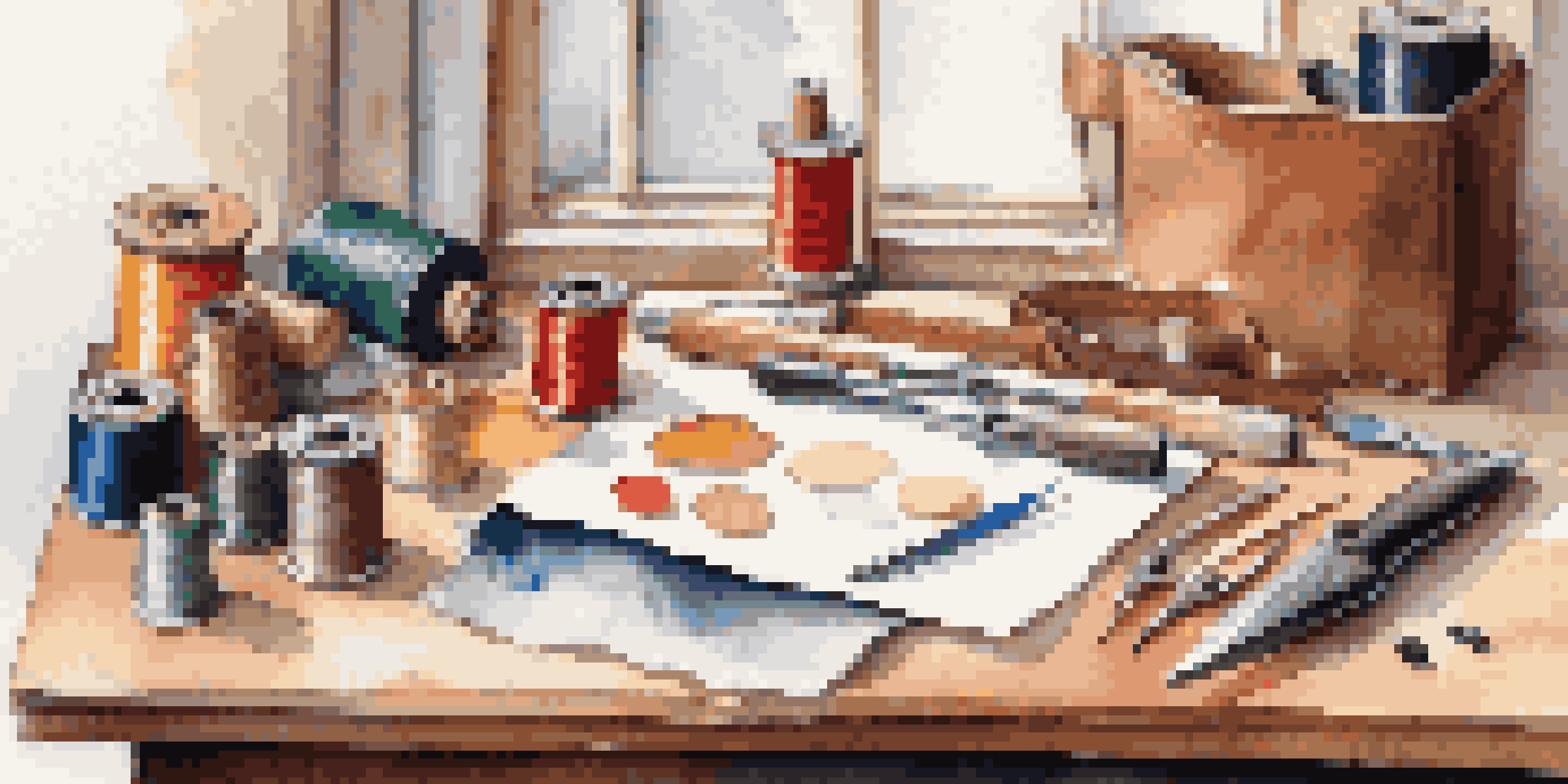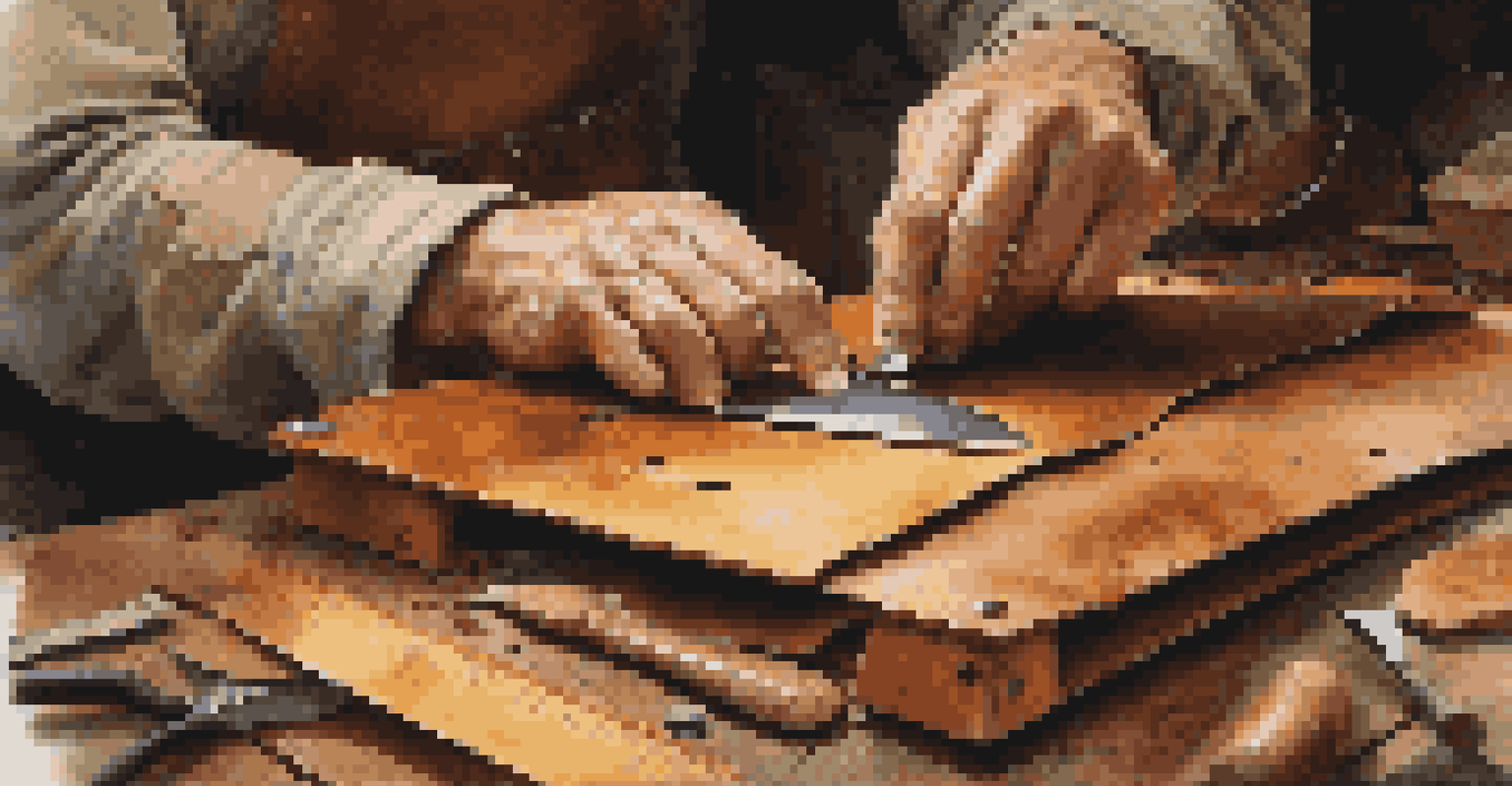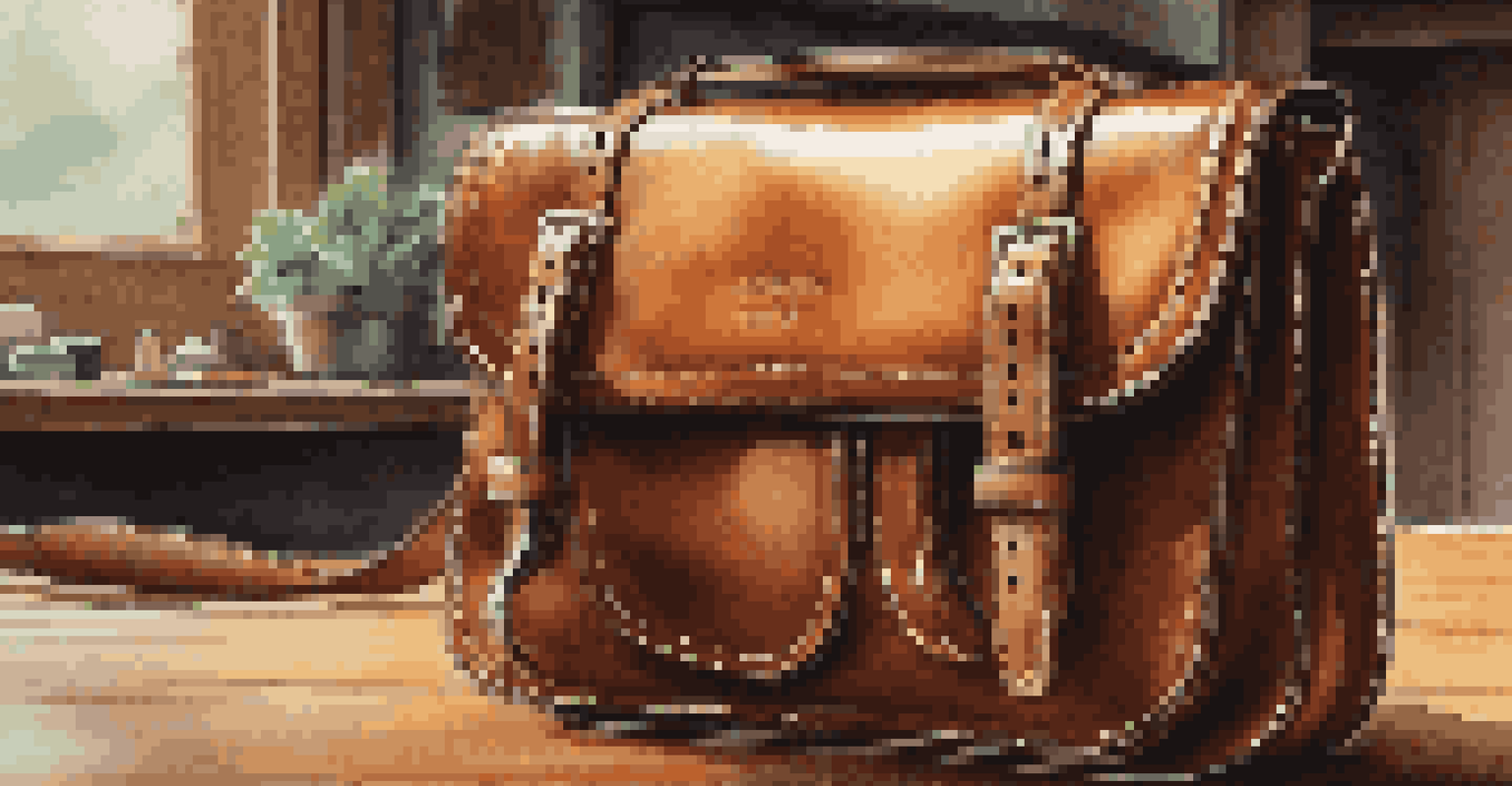How to Make Leather Bags: Design, Cut, and Assemble

Understanding Leather Types for Your Bag Design
Before diving into the world of leather bags, it's essential to know the different types of leather available. Full-grain leather is the highest quality, retaining the natural texture and durability, while top-grain leather is slightly more processed but still offers a premium feel. For budget-friendly options, you might consider genuine leather, which is more affordable but less durable.
The best part about leather is that it only gets better with age.
Choosing the right leather affects not only the aesthetics but also the longevity of your bag. For example, if you're designing a bag meant for daily use, opting for a thicker, more durable leather would be wise. Alternatively, for a stylish evening bag, a softer, more supple leather could be just the ticket.
Understanding these properties will guide your design choices and help ensure your final product meets your needs and style preferences. So, take the time to explore these options before you sketch your first design!
Designing Your Leather Bag: Sketching and Planning
Once you've chosen your leather, it's time to bring your vision to life with a design sketch. Start by considering the bag's purpose—will it be a tote, a backpack, or a clutch? This will influence your dimensions and features. Don't worry about making it perfect; the goal is to capture the essence of your idea.

In your sketch, think about practical elements, like pockets or closures, that will enhance usability. For instance, adding an interior pocket can help keep your essentials organized. Plus, consider how you'll incorporate any design elements, such as stitching patterns or embellishments.
Choose the Right Leather Type
Selecting the appropriate leather type impacts both the durability and style of your bag.
As you refine your design, keep in mind the balance between aesthetics and functionality. A beautiful bag is a joy to carry, but it should also serve its purpose well. This planning phase lays a solid foundation for the next steps in the bag-making process.
Gathering Tools and Materials for Leather Crafting
Before cutting into your leather, gather all the necessary tools and materials to ensure a smooth crafting experience. You'll need a sharp utility knife, cutting mat, ruler, and a leather hole punch, among other tools. Having everything on hand will save you time and frustration as you work.
Good design is as little design as possible.
In addition to tools, don't forget about your materials. Apart from the leather, you may want to pick up thread, rivets, or buckles that complement your design. Each component you choose contributes to the overall look and functionality of your bag, so select wisely.
By preparing your workspace and materials ahead of time, you create an efficient workflow. This organization will allow your creativity to flourish without unnecessary interruptions, making the crafting process enjoyable.
Cutting Leather: Techniques for Precision and Clean Edges
Cutting leather can seem daunting, but with the right technique, you can achieve clean, precise edges. Start by laying your leather flat on a cutting mat and using a ruler to measure and mark your cutting lines. A sharp utility knife is essential here; it will make cleaner cuts than scissors, which can create jagged edges.
As you cut, use steady pressure and take your time to ensure accuracy. If you're working with thicker leather, it might be wise to make multiple passes with the knife rather than trying to cut through in one go. This will help prevent mistakes and ensure your pieces fit together perfectly later on.
Plan Your Design Carefully
Sketching and planning your bag's purpose and features is crucial for a successful crafting process.
Remember, the quality of your cuts will directly affect how well your bag assembles. Taking care at this stage will pay off in the final product, so don’t rush—precision is key!
Assembling Your Leather Bag: Step-by-Step Process
With your leather pieces cut, it's time to assemble your bag! Start by laying out your pieces according to your design plan. This helps you visualize how everything fits together before you start stitching or attaching hardware. Take a moment to ensure each piece aligns correctly.
Next, begin attaching your components. If your design includes pockets, add them first, as they can be trickier to work with once the bag is fully assembled. Use a leather adhesive for temporary holds, and then secure everything with stitching or rivets as needed.
As you assemble, pay attention to the seams and edges. Neat, even stitching not only enhances the look of your bag but also adds to its durability. A well-constructed bag will withstand the test of time, so take pride in this crucial step!
Finishing Touches: Polishing and Protecting Your Bag
After assembling your bag, it's time for the finishing touches that will elevate your creation. Start by trimming any excess thread and smoothing out rough edges with sandpaper or a leather edge burnisher. These small details can make a significant difference in the overall appearance of your bag.
Next, consider applying a leather conditioner or protectant. This will not only enhance the leather's natural beauty but also provide a layer of protection against stains and wear. Regular conditioning can extend the life of your bag, keeping it looking fresh for years to come.
Maintain Your Leather Bag
Regular care and conditioning can extend the life and beauty of your leather bag.
Finally, take a moment to admire your handiwork! A well-finished bag not only showcases your skills but also reflects your unique style. It’s a satisfying conclusion to your crafting journey.
Caring for Your Leather Bag: Tips for Longevity
Once you've crafted your leather bag, it's essential to care for it to ensure its longevity. Regularly clean your bag with a soft cloth to remove dust and dirt, and avoid exposing it to extreme temperatures or moisture. Leather is a natural material and can be sensitive to environmental changes.
Every few months, consider conditioning your bag to maintain its suppleness and shine. This will help prevent cracking and keep your bag looking like new. Be sure to use products specifically designed for leather to avoid any unwanted damage.

By incorporating these care tips into your routine, you'll not only preserve the beauty of your bag but also enjoy it for many years ahead. After all, a well-loved leather bag can become a cherished companion over time.